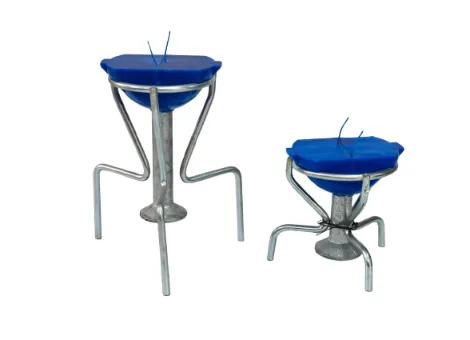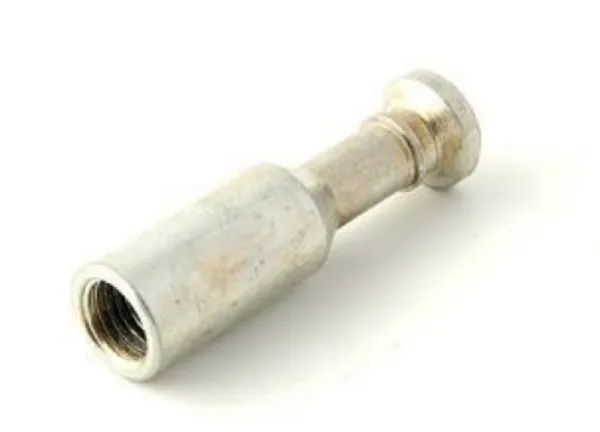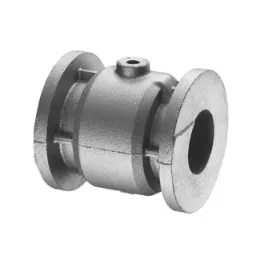Introduction to Concrete Lifting Clutches
Concrete lifting clutches are essential tools in construction and industrial sectors, designed to facilitate the safe and efficient handling of heavy concrete loads. These devices are specifically engineered to grip and lift concrete components securely, minimizing the risk of accidents and damage. Understanding how a concrete lifting clutch works can significantly enhance operational safety and efficiency. In this in-depth guide, we will delve into the key components, design mechanics, and practical use of lifting clutches.
Key Components of a Concrete Lifting Clutch
Body
The main body of a concrete lifting clutch is usually constructed from high-strength, durable materials such as steel. This component is responsible for bearing the entire load of the concrete during lifting operations. The body is designed to distribute the weight evenly, reducing stress on any single point and ensuring superior stability. This feature is crucial for maintaining safety and structural integrity throughout the lifting process.
Latch Mechanism
The latch mechanism is the heart of the lifting clutch, responsible for securing and releasing the load. Typically, it includes a robust locking system that guarantees a strong grip on the concrete component. Advanced latch mechanisms often have built-in redundancy to prevent accidental disengagement, thereby enhancing safety. The smooth operation of the latch mechanism is essential for reliable performance and ease of use in various lifting conditions.
Safety Features
Safety is paramount when dealing with heavy concrete loads. Modern concrete lifting clutches come equipped with a range of safety features designed to prevent accidents. These may include emergency release mechanisms, load indicators, and fail-safes that activate if the clutch encounters undue stress. Regular maintenance and inspection further ensure that these safety measures function correctly, providing an additional layer of protection for operators and bystanders.
The Design and Mechanics of a Concrete Lifting Clutch
Material Composition
The material composition of a lifting clutch is a critical factor in its performance and durability. High-strength steel is commonly used due to its excellent load-bearing properties and resistance to wear and tear. Some clutches may also incorporate alloy elements to enhance specific characteristics such as corrosion resistance or tensile strength. The choice of materials ensures that the clutch can withstand the rigors of heavy-duty applications without compromising safety or longevity.
Weight Capacity
Concrete lifting clutches are meticulously engineered to handle specific weight capacities. These capacities are predetermined based on rigorous testing and compliance with industrial standards. The clearly marked weight limits ensure that operators can select the appropriate clutch for the job, avoiding overloading, which could lead to catastrophic failure. Users must always adhere to these limits to ensure safe and efficient operations.
Attachment Methods
The method of attachment is another crucial aspect of lifting clutch design. Different clutches are designed to attach to various forms of lifting equipment, such as cranes, hoists, or forklifts. The attachment method must be secure and straightforward to ensure quick and safe coupling and decoupling. Common attachment techniques include shackles, hooks, and eye bolts, each chosen based on the specific application and load requirements.
The Process of Using a Concrete Lifting Clutch
Inspection Before Use
Checking for Wear and Tear
Before using a lifting clutch, a thorough inspection is essential to identify any signs of wear and tear. Cracks, deformations, or corrosion on the clutch body or latch mechanism can indicate a compromised structure. Regular inspection routines help in early detection of such issues, allowing for timely maintenance or replacement to prevent accidents during lifting operations.
Verifying Load Capacity Limits
Ensuring that the load does not exceed the lifting clutch’s rated capacity is crucial for safe usage. Operators should verify the projected load weight against the clutch’s specified limits to prevent overloading. Adhering to these limits safeguards the equipment from undue stress and potential failure, ensuring a seamless and secure lifting process.
Attaching the Clutch to the Load
Positioning the Clutch Correctly
Proper positioning of the lifting clutch on the load is vital for achieving a secure connection and enhanced safety. The operator must ensure that the clutch aligns perfectly with the lifting points on the concrete component. Misalignment can cause uneven loading, leading to potential slipping or dropping of the load. Using alignment tools and following manufacturer guidelines assist in achieving accurate positioning.
Ensuring Secure Connection
Once the clutch is positioned correctly, securing the connection firmly is the next crucial step. This involves ensuring that the latch mechanism fully engages and locks around the lifting points. Operators should manually confirm that the connection is tight and verify that any safety features are activated. A secure connection is paramount to prevent accidental release during the lifting process.
Lifting and Moving the Load
Operating the Crane or Hoist
With the clutch securely attached, the next phase involves operating the lifting equipment, such as a crane or hoist. It’s essential that the operator is skilled and familiar with the equipment controls. The lifting process should be smooth, avoiding jerky movements that can impose sudden stress on the clutch. Precision and control are key to maintaining a stable and safe lift.
Monitoring for Safety during Movement
Throughout the lifting and moving process, continuous monitoring is required to ensure safety. Operators and spotters must watch for any signs of instability or unexpected movement. Communication between team members is critical to promptly address any issues that may arise. Adhering to safety protocols and staying vigilant minimizes risks and ensures a successful operation.
Advancements in Concrete Lifting Technology
Innovations in Design
The field of concrete lifting technology is constantly evolving, with significant innovations enhancing the design and functionality of lifting clutches. Modern clutches feature ergonomic designs that reduce strain on operators and improve handling. Advanced materials and engineering techniques lead to lighter yet stronger clutches, increasing overall efficiency and making them easier to use.
Improvements in Safety Features
Safety features have seen substantial improvements due to technological advancements. Contemporary lifting clutches integrate smart sensors that provide real-time data on load conditions and stress levels. These sensors can alert operators to potential issues before they escalate, allowing for proactive measures. Additionally, enhanced emergency release systems ensure rapid and safe disengagement if needed.
Common Applications for Concrete Lifting Clutches
Concrete lifting clutches are versatile tools used across various applications in the construction industry. They are commonly employed in the installation of precast concrete components such as beams, panels, and columns. Infrastructure projects, including bridges and highways, also rely heavily on lifting clutches to handle large concrete sections. These tools are essential in both residential and commercial building projects, where precision and safety in handling concrete are critical.
Safety Tips and Best Practices for Using Concrete Lifting Clutches
Safety is a paramount concern when using concrete lifting clutches. Ensuring proper training for all operators is the first step in mitigating risks. Regular maintenance and inspection of the clutches help detect any potential faults early. It is vital to adhere strictly to the manufacturer’s guidelines and weight limits to avoid overloading. Using appropriate personal protective equipment (PPE) and ensuring that all safety features of the lifting clutch are functional further enhance operational safety.
Summary and Final Thoughts
Understanding how a concrete lifting clutch works involves knowing its key components, design mechanics, and the proper procedures for its use. From inspecting for wear and tear to ensuring secure load attachment and safe lifting practices, every step is crucial for successful operations. Advancements in technology continue to improve the safety and efficiency of these indispensable tools. By following best practices and staying informed about the latest innovations, operators can ensure the safe and effective handling of heavy concrete loads in various construction and industrial applications.
If you are looking for a suitable lifting clutch, BAOQI will be your right choice
The BAOQI lifting clutch is a device used for lifting heavy objects. It is designed to provide a secure and efficient lifting solution. The clutch is equipped with advanced technology, ensuring precise control and delivering power to where it is needed. It is known for its high drawbar pull forces, allowing for safe and uniform load-carrying performance. Additionally, the BAOQI lifting clutch offers easy maintenance with features such as an automatic greasing system and auto track tensioning. Overall, this clutch is a reliable and convenient tool for various lifting applications.









